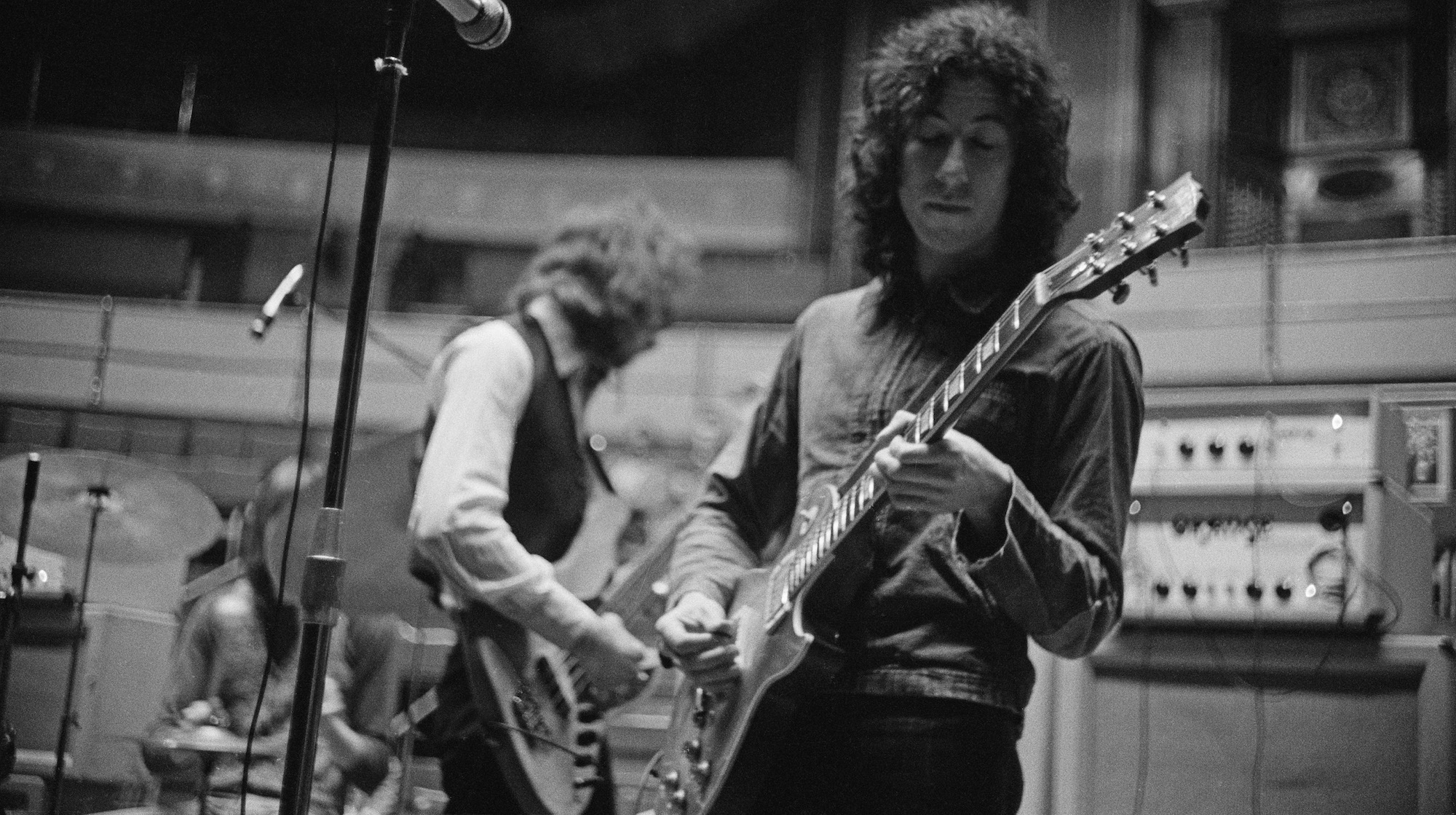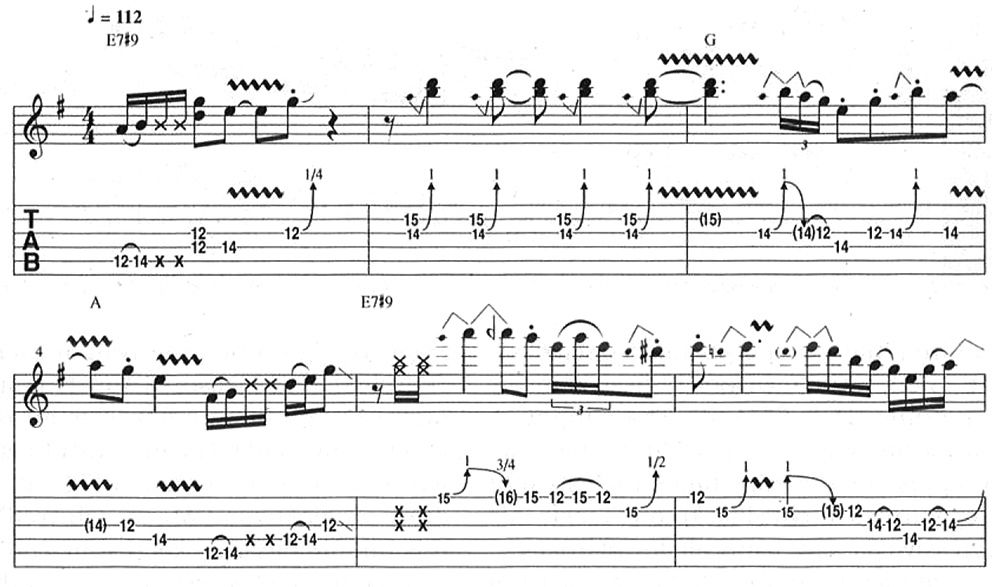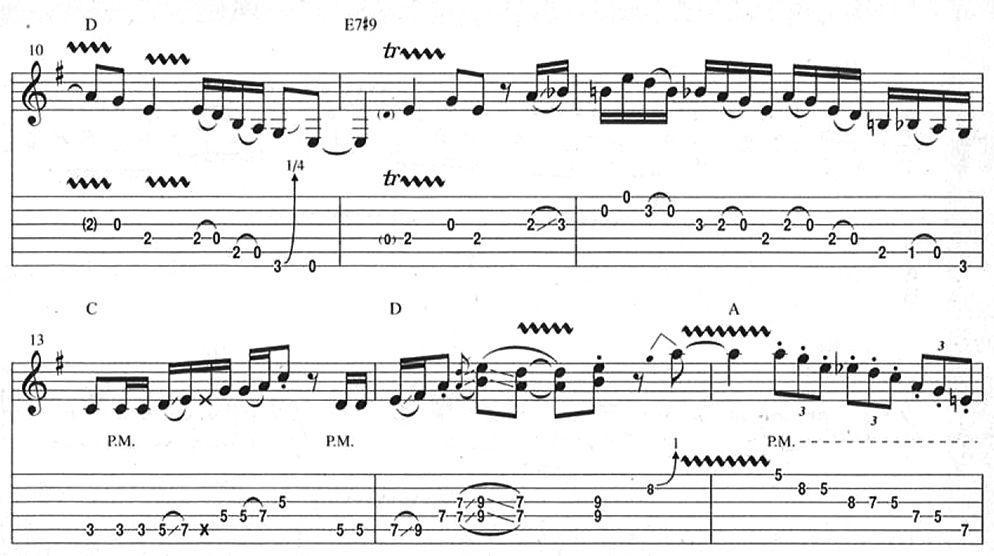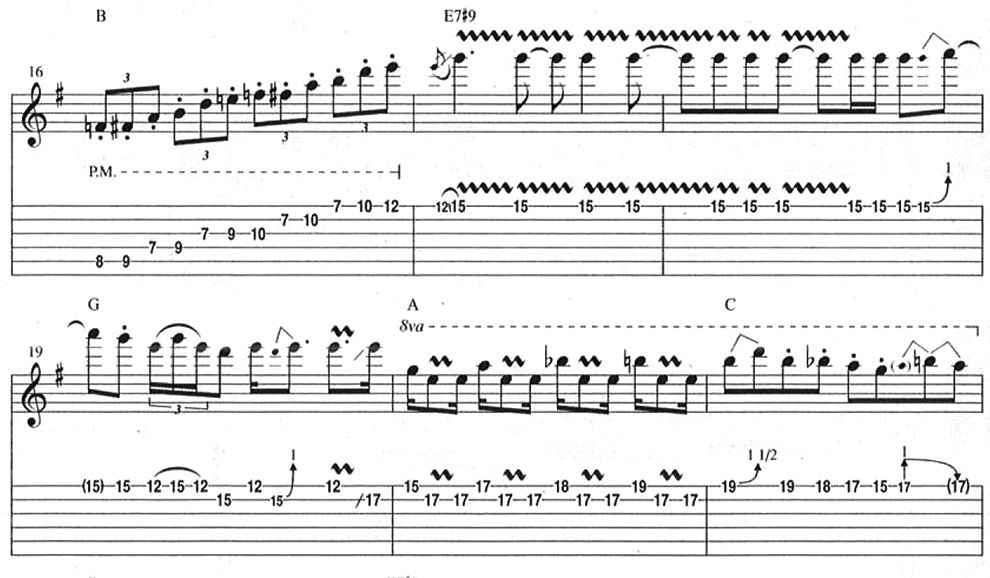Blues-Rock Power: Master the Electrifying Phrases of Peter Green, Jimi Hendrix and Others
Loud and heavy, with an emphasis on extended solos, this is a vital style of guitar. Nail it down with this lesson.

In the mid Sixties, when all ears seemed to be trained on Liverpool and the Merseybeat Sound, there was a new music taking seed in the clubs of London.
Loud and heavy, with an emphasis on extended solos, it was basically a revved-up, distortion-laden offshoot of the electric blues pioneered by American artists like Muddy Waters, Albert King and B.B. King, and developed by acts like the Yardbirds, John Mayall’s Bluesbreakers, the Animals and Fleetwood Mac. The new hybrid would eventually be coined, quite logically, “British blues rock.”
It was an exciting time in rock history, to be sure - the period that gave birth to future blues guitar legends such as Eric Clapton, Jeff Beck, Jimmy Page, Peter Green, Ritchie Blackmore and a transplanted Yank who spelled his first name “Jimi.”
Blues-Rock Phrasing
In 1965, Eric Clapton left the Yardbirds and joined John Mayall’s Bluesbreakers. Clapton’s playing on the group’s 1966 release, Blues Breakers, set the standard for blues-rock guitar. With a Gibson Les Paul plugged into a Marshall, he carved influential lines like the one in Figure 1.
Drawn exclusively from the A minor pentatonic scale (A C D E G), it mixes syncopated 16th notes (bar 1) with staccato attacks, both hammer-ons and pull-offs, and sustained notes drenched with fret-hand vibrato.

Figure 2A represents the blues-rock side of Jimi Hendrix, evidenced in such tunes as “Hey Joe” and “Voodoo Child (Slight Return).”
Based on the E minor pentatonic scale (E G A B D), it features inflections on the open high E string, plus a pair of Hendrix’s trademark unison-bend licks (bar 2). For the latter, fret the 2nd-string note with your 1st finger while bending the 3rd string with your 3rd. And don’t forget to let the 1st string ring out.
Figure 2B is in the style of Peter Green, Clapton’s replacement in the Bluesbreakers and future guitarist for Fleetwood Mac. Incorporating the E blues scale (E G A Bb B D), it features a 16th-eighth-16th rhythmic motif and calls for a palm-muted pick attack.
On beat 4, bend the 3rd string with your 3rd finger while you hold the 2nd string with your pinkie.

The fiery Figure 3 is inspired by another Yardbirds alumnus, Jimmy Page, and his sizzling blues-rock phrasing on early Led Zeppelin recordings.
Drawn from the A blues scale (A C D Eb E G), this one is bursting with Page’s customary legato moves: slides, hammer-ons and pull-offs. Note the passing major 7th (G#) and major 6th (F#) in the second measure.

When Clapton left the Yardbirds, his former bandmates replaced him with the brash and daring Jeff Beck.
Figure 4 is an example of Beck’s unusual and highly inventive single-string work. Keep your 1st finger planted on the 3rd string throughout; use your 4th or 3rd finger to fret the first notes in each series of pull-offs and your 1st finger for the downward slides.

The Solo
The 24-measure solo shown in Figure 5 revolves around an E7#9 chord, the mother of all blues-rock chords.
A bIII-IV (G–A) cadence marks the first eight measures, while bVI–bVII (C–D) and IV–V (A–B) passages provide a contrasting bridge section in measures 9–16. The outro (measures 17–24) is basically a condensed reprise of the first 16 measures.
The solo opens with a Clapton-esque rhythmic statement similar to the A minor pentatonic example of Figure 1. A set of matching, fixed-string bends follows in measure 2. Adding vibrato to both strings during such bends takes a good deal of hand strength and therefore is no small feat.
Try using your bending (3rd) finger to initiate the vibrato and allowing your 4th finger to join in on the wiggling process. The second half of measure 3 features a Hendrixian E minor pentatonic (E G A B D) phrase which culminates at the end of measure 4 in a variation on the opening phrase.
Measure 5 brings back the E7#9 chord and with it a David Gilmour–inspired E minor pentatonic passage. Note the partial release of the first bend - G to A on the 1st string - and the unusual half-step bend to the major-7th degree (D#).
Midway through measure 6, the bluesy phrase segues into a burning, Jimmy Page–style run that descends the E minor pentatonic scale and concludes with an extended slide down the 6th string. This is a rather long phrase, so work it out slowly as you tackle its various sequences or repeating patterns.

At measure 9 we hit the bridge, where the solo launches full bore into “Electric Jimiland.” The maneuvers here, similar to those in Figure 2, are founded on the open-position E minor pentatonic scale.
Open 1st-string reinforcement, a trill and the well-balanced mixture of rhythmic variations (quarter, eighth and 16th notes) lend a riff-like quality to this three-bar phrase (measures 9–11).
In response to this lyrical passage, another incendiary Jimmy Page lick spreads across measure 12. Inspired by the second solo break in “Whole Lotta Love,” it’s culled from the open-position E blues scale and contains pull-offs galore.
Measures 13–14 call to mind the major-pentatonic mannerisms of Eric Clapton, as heard in such songs as Cream’s “Crossroads” and “Sunshine of Your Love.” Measure 13 is built from the C major pentatonic scale (C D E G A) while measure 14 uses D major pentatonic (D E F# A B).
The choppy A blues scale (A C D Eb E G) line in bars 15–16 represents the edgy blues-rock style of Deep Purple’s Ritchie Blackmore. Tackle this aggressive passage using all downstrokes.


A relentlessly attacked high G at measure 17 marks the top of the outro (measures 17–24). Spread across two full measures, this idea gradually gains rhythmic intensity, escalating from dotted quarter notes to quarter and eighth and, finally, 16th notes.
This simple yet effective technique - repetition - has been used by blues players since time immemorial and has been employed by virtually all notable blues-rock guitarists as well.
Two prime examples occur in the outros of Hendrix’s “All Along the Watchtower” and “Purple Haze.” Measure 19 hosts a variation on the David Gilmour lick from measure 5, followed by a Peter Green–style phrase similar to the one discussed in Figure 2B (which drew on Fleetwood Mac’s “Oh Well”).
For this nimble passage, keep your 2nd finger planted on the 2nd string, and fret the 1st-string notes with your other digits.
At the top of measure 21, a wicked 1 1/2–step bend kicks off the goodbye phrases of the solo. Bend with your 3rd finger and reinforce it with your 1st and 2nd fingers. Measures 21–22 are sort of a cross between Jimmy Page (“You Shook Me”) and David Gilmour (“Money”), while measures 23–24 represent a Clapton-meets-Hendrix play on a double-stop-enhanced E minor pentatonic run.


Get The Pick Newsletter
All the latest guitar news, interviews, lessons, reviews, deals and more, direct to your inbox!
Guitar Player is the world’s most comprehensive, trusted and insightful guitar publication for passionate guitarists and active musicians of all ages. Guitar Player magazine is published 13 times a year in print and digital formats. The magazine was established in 1967 and is the world's oldest guitar magazine. When "Guitar Player Staff" is credited as the author, it's usually because more than one author on the team has created the story.
“Write for five minutes a day. I mean, who can’t manage that?” Mike Stern's top five guitar tips include one simple fix to help you develop your personal guitar style
"It’s like you’re making a statement. And you never know where it’ll lead." Pete Thorn shares the tip that convinced Joe Satriani he was the right guitarist for the SatchVai Band










